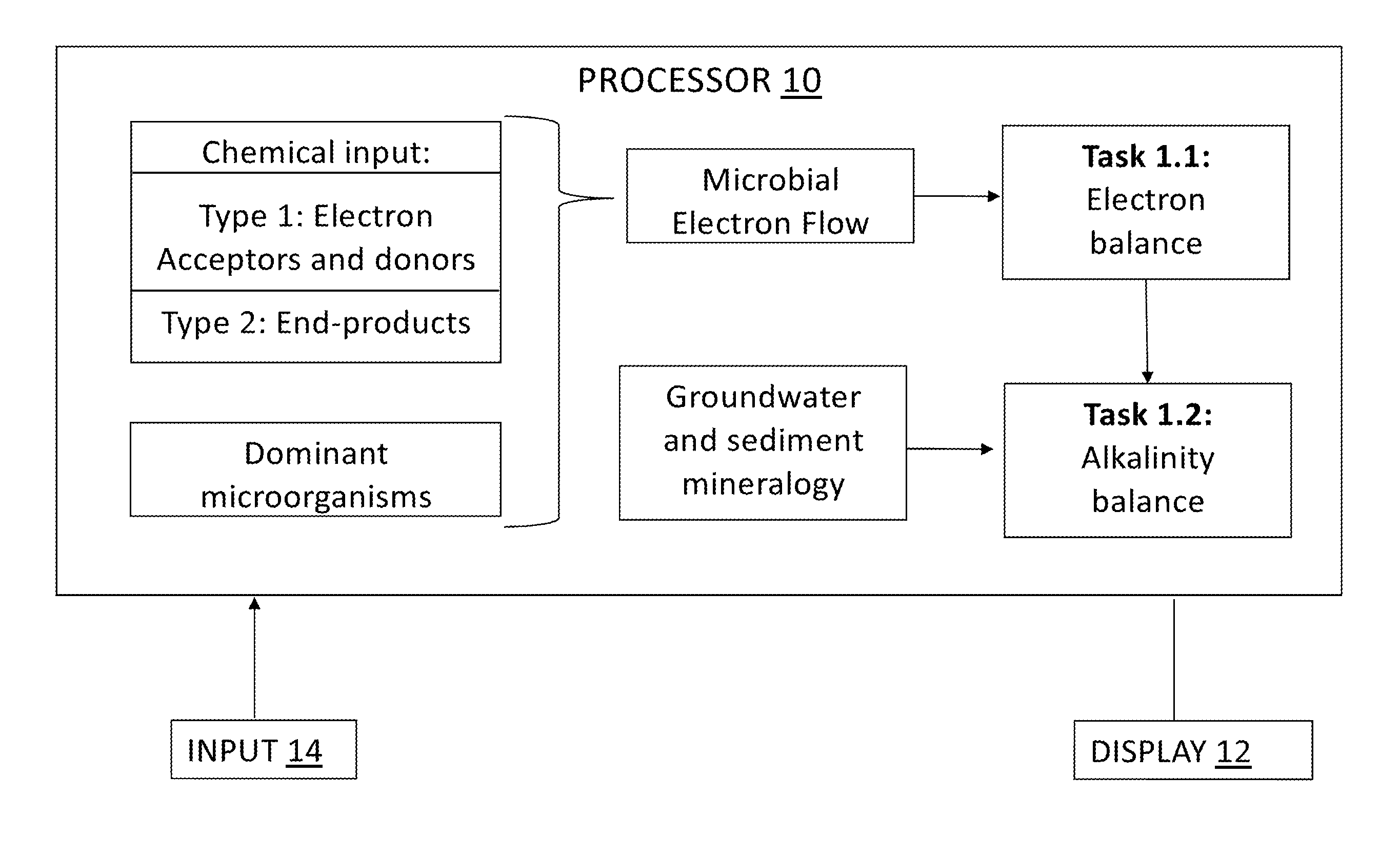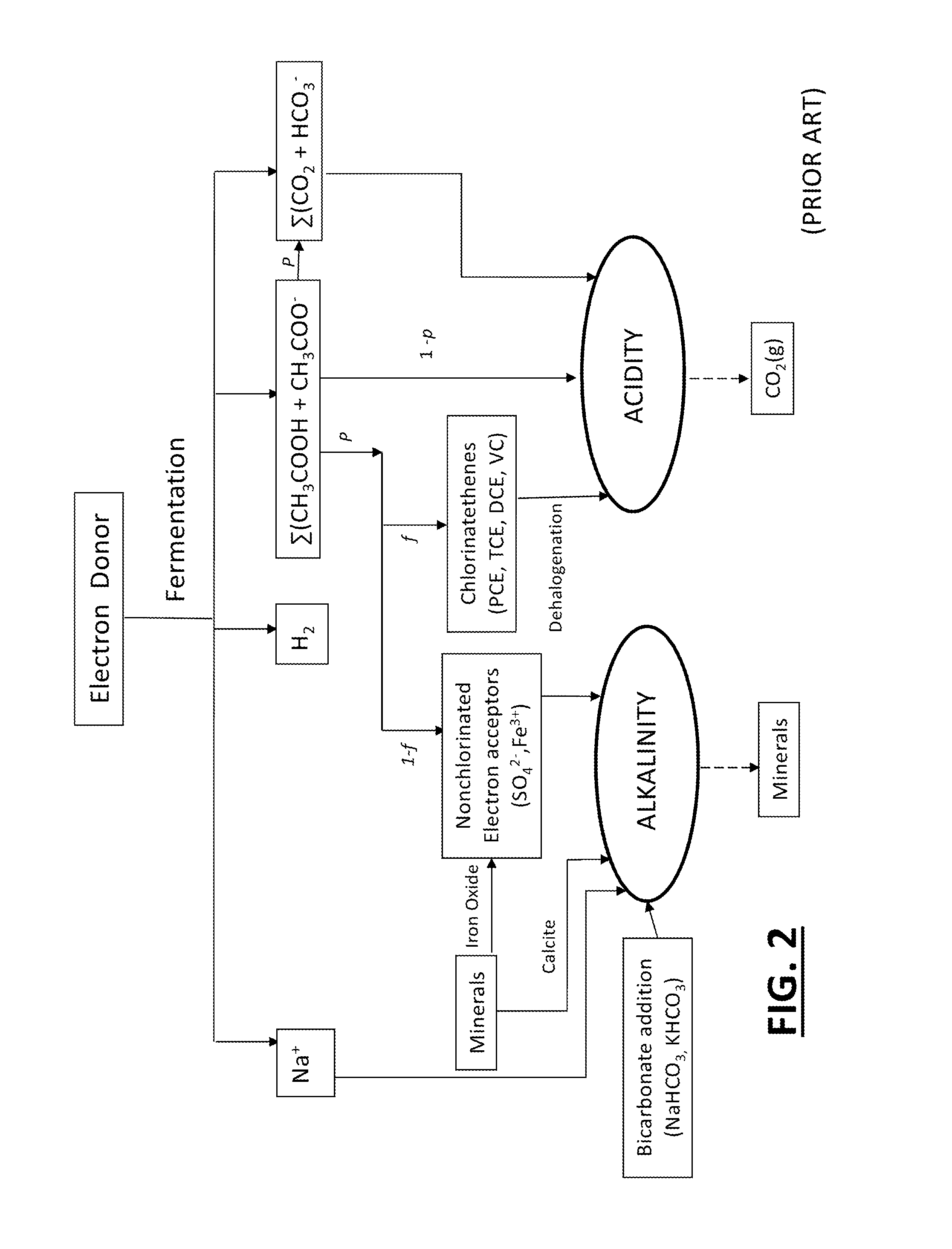Tool for optimizing chlorinated-solvent bioremediation through integration of chemical and molecular data with electron and alkalinity balances
a technology of chlorinated solvents and electrons, applied in chemical methods analysis, instruments, material electrochemical variables, etc., can solve the problems of incomplete reductive dechlorination, waste of electron donors, inability to optimize chlorinated solvent bioremediation, etc., to mitigate incomplete reductive dechlorination and maximize the accuracy of performance evaluation
- Summary
- Abstract
- Description
- Claims
- Application Information
AI Technical Summary
Benefits of technology
Problems solved by technology
Method used
Image
Examples
Embodiment Construction
[0032]The following disclosure describes several embodiments of a prediction and assessment tool for bioremediation performance based on a comprehensive understanding of the link between chemical flow and microbial community interactions. Several features of methods and systems in accordance with example embodiments are set forth and described in the Figures. It will be appreciated that methods and systems in accordance with other example embodiments can include additional procedures or features different than those shown in the Figures. Example embodiments are described herein with respect to analysis of environmental conditions. However, it will be understood that these examples are for the purpose of illustrating the principles and that the invention is not so limited. Additionally, methods and systems in accordance with several example embodiments may not include all of the features shown in the Figures.
[0033]Unless the context requires otherwise, throughout the specification an...
PUM
| Property | Measurement | Unit |
|---|---|---|
| pH | aaaaa | aaaaa |
| cell volumes | aaaaa | aaaaa |
| alkalinity | aaaaa | aaaaa |
Abstract
Description
Claims
Application Information
 Login to View More
Login to View More - R&D
- Intellectual Property
- Life Sciences
- Materials
- Tech Scout
- Unparalleled Data Quality
- Higher Quality Content
- 60% Fewer Hallucinations
Browse by: Latest US Patents, China's latest patents, Technical Efficacy Thesaurus, Application Domain, Technology Topic, Popular Technical Reports.
© 2025 PatSnap. All rights reserved.Legal|Privacy policy|Modern Slavery Act Transparency Statement|Sitemap|About US| Contact US: help@patsnap.com



